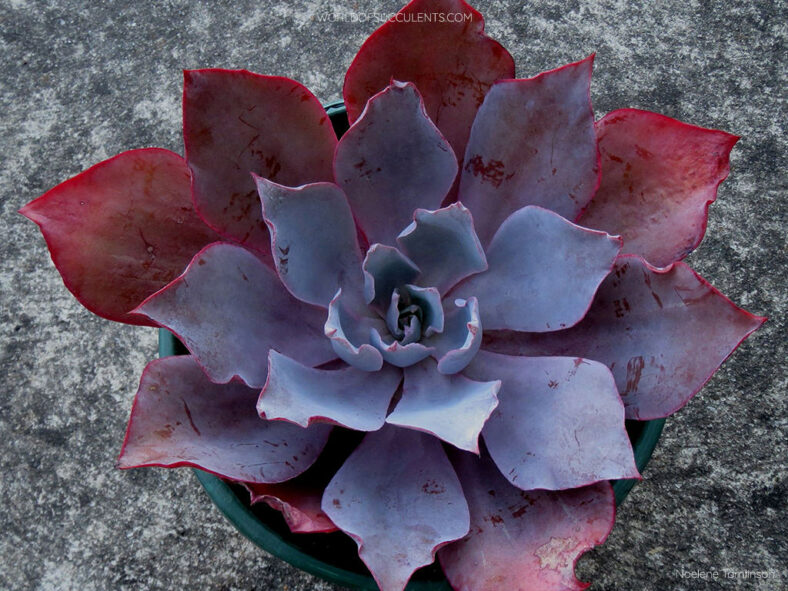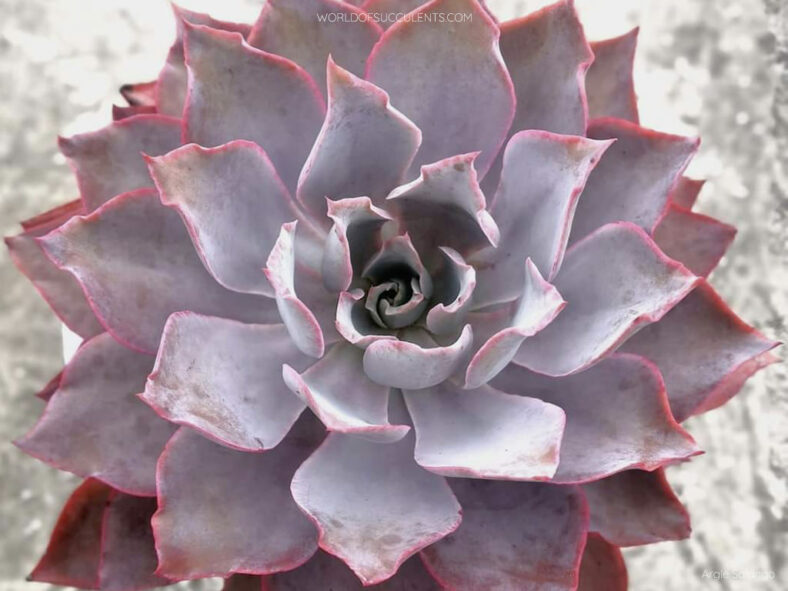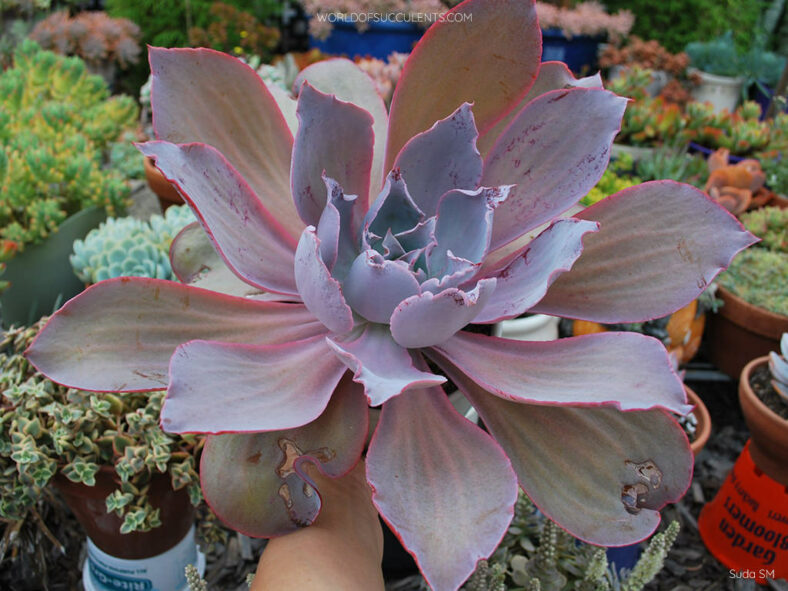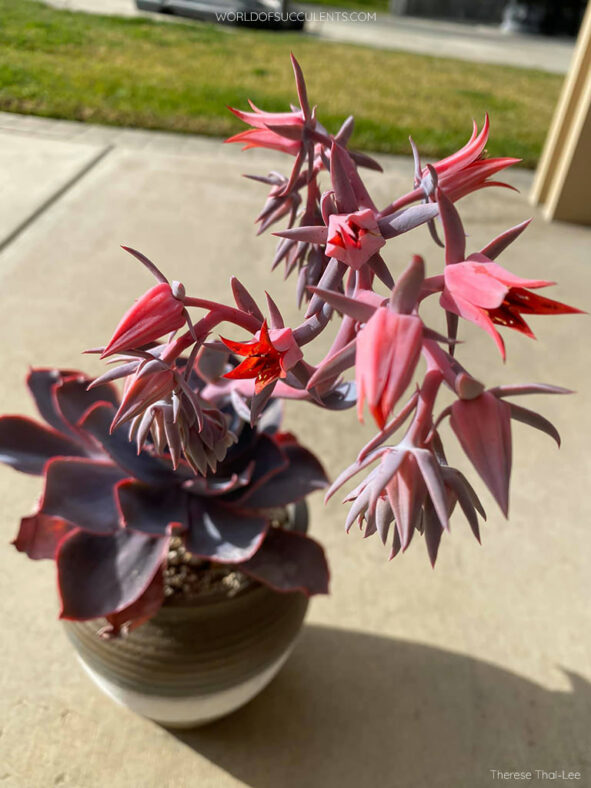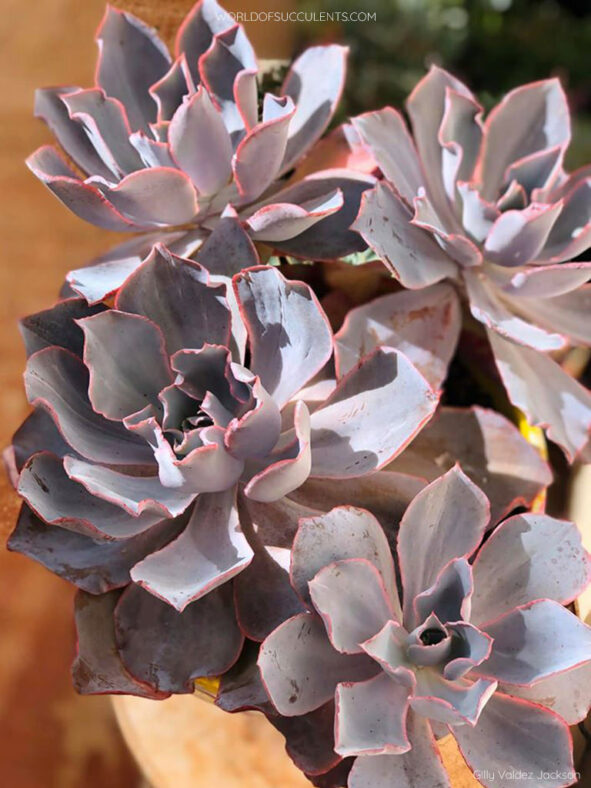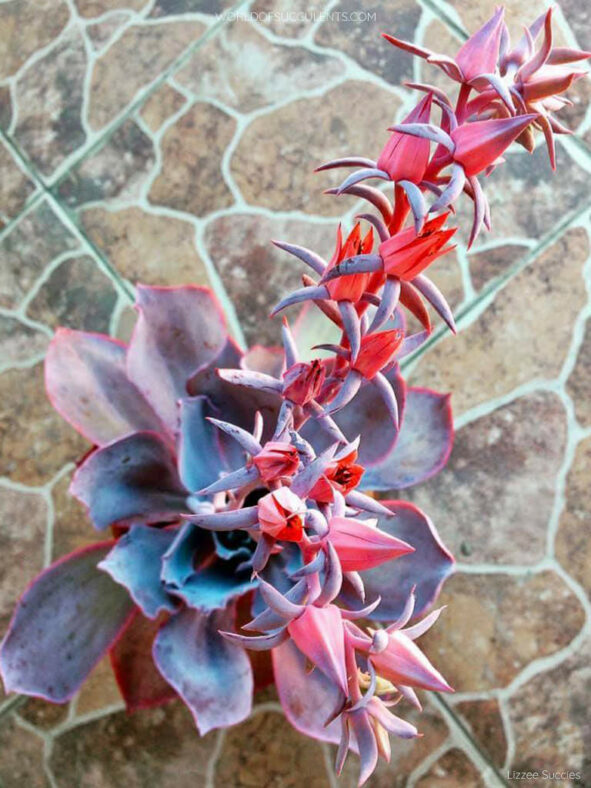Echeveria 'Afterglow' is a succulent plant with large rosettes and vibrant colors in bright sunlight, making it a great addition to any succulent garden.
Scientific Name
Echeveria 'Afterglow'
Scientific Classification
Family: Crassulaceae
Subfamily: Sempervivoideae
Tribe: Sedeae
Genus: Echeveria
Origin
Echeveria 'Afterglow' is a hybrid created by Don Worth, an avid succulent grower and professional photographer in the San Francisco Bay Area in Northern California, United States. It results from a cross between Echeveria cante and Echeveria shaviana and is a sister seedling to Echeveria 'Morning Light' and Echeveria 'Morning Star'.
Description
Echeveria 'Afterglow' is a stunning succulent that forms large rosettes of hot pink-edged leaves, which emerge grey-green and then flush pink and purple when exposed to bright sunlight. The rosettes grow on a short, stout stem and can reach a diameter of 16 inches (40 cm). They can produce a few offsets from their short stems as they mature. The leaves are fleshy, spoon-shaped, flexible, with a slight wave, and covered with a delicate, waxy bloom that rubs off when touched.
During the summer months, Echeveria 'Afterglow' produces branched stalks with bell-shaped, coral-colored flowers that open in slow succession for a long-lasting display.
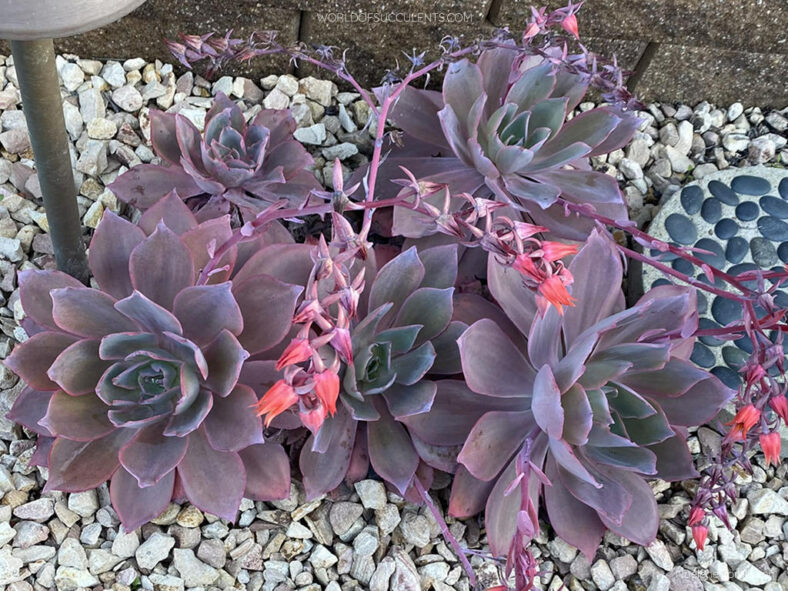
Hybrids of Echeveria 'Afterglow'
How to Grow and Care for Echeveria 'Afterglow'
Light: Echeveria 'Afterglow' requires full sun to partial shade for optimal growth. Therefore, place it near the brightest window in your home. Additionally, if you plan to move the plant outside in the spring, do so gradually and avoid exposing it to intense afternoon sun.
Soil: Having soil that drains quickly is most important for growing a healthy succulent. While many growers prefer to create their own soil mix, commercial soil for succulents is also suitable.
Temperature: High temperatures are not a problem as long as there is plenty of fresh air. However, Echeveria 'Afterglow' is a tender succulent that must be brought indoors if there is a risk of freezing temperatures. It grows best in USDA Plant Hardiness Zones 9b to 11b, with average minimum winter temperatures ranging from 25°F to 50°F (-3.9°C to 10°C).
Watering: The "soak and dry" method is the preferred schedule for this plant during the growing season. Water deeply, then allow the soil to dry out completely before watering again. Water sparingly during the winter, only enough to keep the plant from shriveling. Above all, if you have a saucer under the pot, be sure to empty the excess water.
Fertilizing: Although the plant can grow well without fertilizer, it may benefit from additional nutrients. Feed only during the growing season and use a water-soluble fertilizer diluted to half the recommended strength.
Repotting: If growing in a container, repot as needed in spring or early summer, but ensure the soil is dry before repotting. Also, always use a container with drainage holes.
Propagation: Echeveria 'Afterglow' can be propagated by leaves, offsets, and stem cuttings. The best time to take cuttings and separate offsets is in the spring.
Learn more at How to Grow and Care for Echeveria.
Toxicity of Echeveria 'Afterglow'
Echeveria 'Afterglow' has no reported toxic effects and is safe for growing around children and pets.
Links
- Back to genus Echeveria
- Succupedia: Browse succulents by Scientific Name, Common Name, Genus, Family, USDA Hardiness Zone, Origin, or cacti by Genus
Photo Gallery
Click on a photo to see a larger version.
